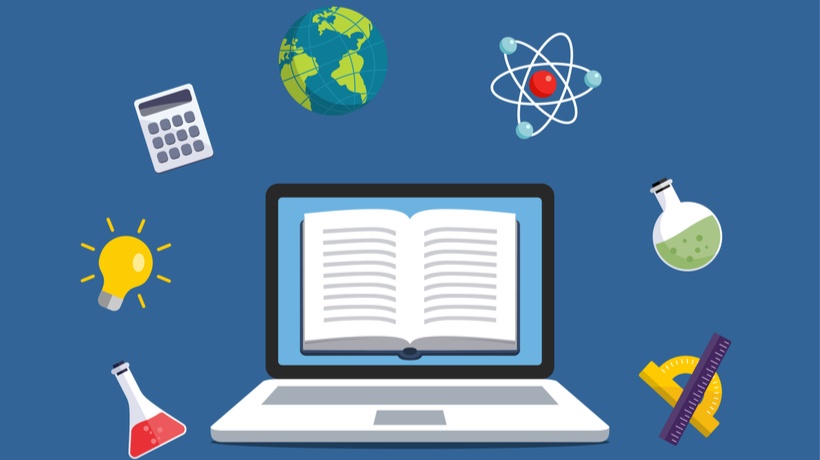The Role of Technology in Modern Education
In the 21st century, technology has become an integral part of daily life, revolutionizing industries and reshaping how we communicate, work, and learn. Education, in particular, has experienced a dramatic transformation due to technological advancements. From smart classrooms and digital textbooks to online learning platforms and AI-driven teaching tools, the role of technology in modern education is pivotal. This blog post explores how technology is shaping the educational landscape, enhancing learning outcomes, and preparing students for a tech-driven future.
The Evolution of Educational Technology
Traditionally, education was confined to physical classrooms, chalkboards, and printed textbooks. With the advent of digital tools, the learning experience has become more dynamic and interactive. Computers, tablets, high-speed internet, and smart devices have enabled educators to adopt innovative teaching methodologies, moving beyond rote memorization to more engaging and personalized learning experiences.
1. Digital Classrooms and E-Learning Platforms
One of the most significant impacts of technology in education is the rise of digital classrooms. Tools like Google Classroom, Microsoft Teams, and Moodle have made it easier for teachers and students to connect, share resources, and collaborate in real-time. E-learning platforms such as Coursera, Khan Academy, and Udemy offer thousands of courses on a wide range of subjects, making education accessible to anyone with an internet connection.
The COVID-19 pandemic accelerated the adoption of remote learning, proving that online education is not only viable but also highly effective. Virtual classrooms, video conferencing, and cloud-based collaboration tools became the norm, breaking down geographical and physical barriers to learning.
2. Personalized Learning Experiences
One of the key benefits of educational technology is personalization. With the help of AI and machine learning algorithms, educational platforms can analyze student performance and tailor content to individual learning styles and paces. Adaptive learning software can identify areas where students struggle and provide additional support or alternative explanations, ensuring a deeper understanding of the subject matter.
For example, platforms like DreamBox and Knewton use data analytics to adjust the difficulty of lessons in real-time based on student responses. This targeted approach helps improve retention and engagement, catering to both advanced learners and those who need extra help.
3. Enhanced Engagement through Multimedia Content
Traditional teaching methods often rely heavily on text-based materials, which may not appeal to all students. Technology allows educators to integrate videos, animations, interactive quizzes, and simulations into their lessons, making learning more engaging and effective.
Multimedia content helps illustrate complex concepts in ways that are easier to understand. For instance, a biology teacher can use 3D models and simulations to explain cell division, giving students a visual and interactive learning experience. Such tools also support various learning styles, whether visual, auditory, or kinesthetic.
4. Collaboration and Communication
Technology has greatly enhanced communication and collaboration among students and teachers. Cloud-based platforms like Google Drive and Microsoft OneNote enable students to work on group projects simultaneously from different locations. Discussion boards, forums, and messaging apps encourage peer-to-peer interaction and allow teachers to provide instant feedback.
These tools promote collaborative learning, which fosters critical thinking, teamwork, and problem-solving skills—attributes essential for success in the modern workforce.
5. Virtual Reality (VR) and Augmented Reality (AR)
VR and AR are revolutionizing the way students experience and interact with educational content. VR can transport students to historical landmarks, explore the solar system, or simulate real-world scenarios in subjects like medicine or engineering. AR, on the other hand, overlays digital content onto the real world, bringing textbooks to life.
For example, medical students can use VR headsets to perform virtual surgeries, gaining hands-on experience in a safe and controlled environment. This immersive learning enhances understanding and retention while making education more exciting and relevant.
6. Gamification in Education
Gamification involves incorporating game elements into educational activities to motivate and engage learners. Points, badges, leaderboards, and challenges make learning fun and rewarding. Platforms like Kahoot! and Quizizz turn quizzes into competitive games, encouraging participation and reinforcing knowledge through repetition and interaction.
Studies have shown that gamified learning can significantly improve student motivation, especially among younger learners. It taps into the natural human desire for competition and achievement, making education an enjoyable experience.
7. Bridging the Educational Divide
Technology also plays a crucial role in making education more inclusive and equitable. Online learning platforms offer access to quality education for students in remote or underserved areas. Assistive technologies like screen readers, speech-to-text software, and subtitles empower students with disabilities to learn more effectively.
Government initiatives and nonprofit organizations are working to close the digital divide by providing affordable internet access and digital devices to low-income families, ensuring that technology benefits everyone, regardless of socioeconomic status.
8. Teacher Empowerment and Professional Development
Technology supports not just students, but also educators. Teachers can access a wealth of online resources, attend virtual training sessions, and collaborate with peers worldwide. Platforms like Edmodo and TeachThought offer communities where educators can share ideas, lesson plans, and best practices.
Professional development tools and certification programs help teachers stay updated with the latest pedagogical strategies and technological tools, enabling them to deliver high-quality education in a digital environment.
Conclusion
The role of technology in modern education is transformative and far-reaching. It enhances the learning experience by making it more personalized, interactive, and accessible. As digital tools continue to evolve, they will further revolutionize how education is delivered and received.
To fully leverage the benefits of educational technology, stakeholders—including governments, schools, educators, and parents—must work together to ensure equitable access, ongoing teacher training, and a balanced approach that combines traditional teaching methods with innovative digital solutions.
In a world driven by rapid technological advancement, preparing students with the digital literacy, creativity, and critical thinking skills they need is more important than ever. Embracing technology in education is not just an option—it is a necessity for shaping the future of learning.



